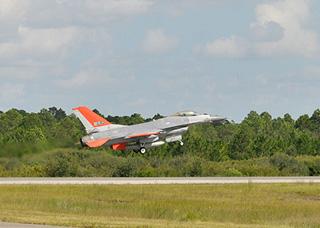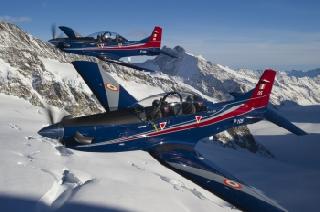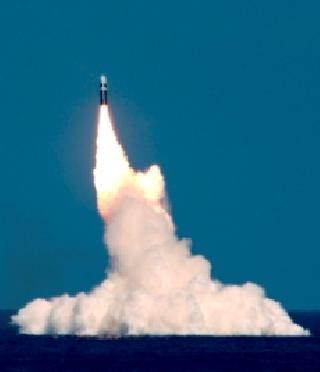
Boeing and the US Air Force completed the first unmanned QF-16 FSAT flight on Sept. 19 at Tyndall Air Force Base, demonstrating the next generation of combat training and testing. Photo: Boeing.
TYNDALL AIR FORCE BASE, FLORIDA (BNS): The US Air Force (USAF) has completed the first unmanned test flight of the Boeing-built QF-16 Full Scale Aerial Target (FSAT), demonstrating the next generation of combat training and testing.
Two USAF test pilots in a ground control station remotely flew the QF-16, which is a retired F-16 aircraft modified to be an aerial target.
The QF-16 mission profile included auto takeoff, a series of simulated maneuvers, supersonic flight, and an auto land, all without a pilot in the cockpit.
During the flight out of Tyndall Air Force base in Florida, the QF-16 reached an altitude of 40,000 feet (nearly 12,200 meters) and flew at supersonic speeds over Mach one, according to Shelhamer.
There was no pilot on board to experience gravitational forces as the plane performed manoeuvres, including a barrel roll.
"It was a little different to see an F-16 take off without anyone in it, but it was a great flight all the way around," Lt. Col. Ryan Inman, Commander, 82nd Aerial Targets Squadron, was quoted as saying in the Boeing news release.
"Now we have a mission capable, highly sustainable full scale aerial target to take us into the future," he added.
The milestone flight initiates more operational evaluations, including a live fire test at Holloman Air Force Base, New Mexico.
The Navy, Army and Air Force will ultimately use QF-16s for weapons testing and other training.
Boeing has modified six F-16s into the QF-16 configuration. Low-rate initial production is scheduled to begin in the fourth quarter, with first production deliveries in 2015.
 Previous Article
Previous Article Next Article
Next Article












The Indian Air Force, in its flight trials evaluation report submitted before the Defence Ministry l..
view articleAn insight into the Medium Multi-Role Combat Aircraft competition...
view articleSky enthusiasts can now spot the International Space Station (ISS) commanded by Indian-American astr..
view article